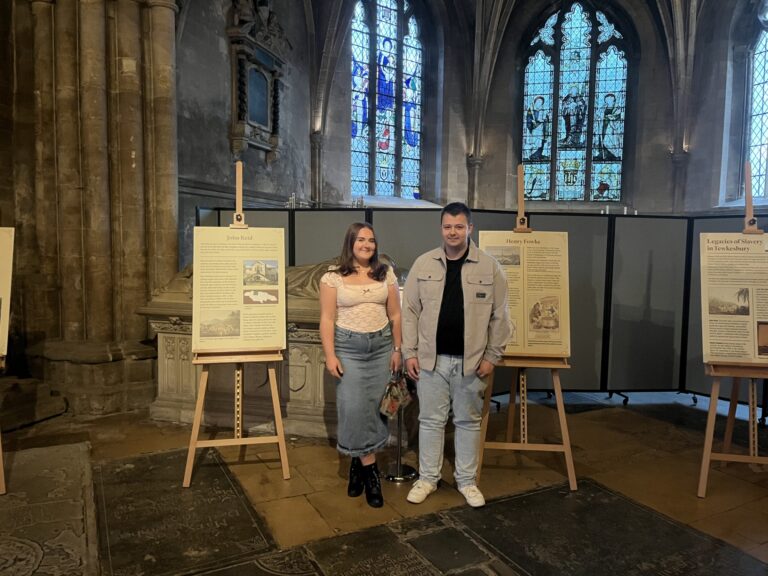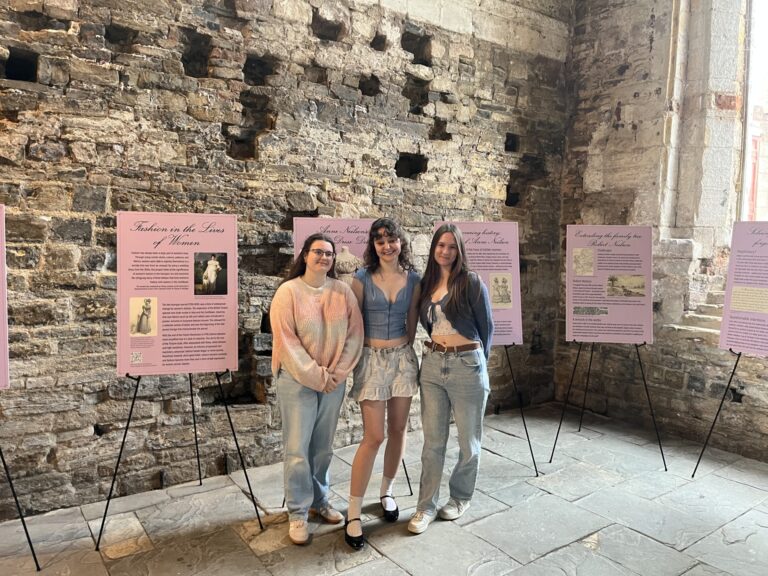| CC4HH
Edward Wilson: A Cheltenham Life
This project was conducted by Sam Webber and Rachel Lane.
Jump to: Life in Cheltenham | Wilson, work & Antarctica | The Final Mission | His Legacy
Life in Cheltenham

Who?
Born in Cheltenham on 23 July 1872, Edward Adrian Wilson became a doctor and zoologist. He served as Junior Surgeon on the Discovery mission to Antarctica 1901-04, with Robert Scott.
Wilson was also a prolific artist, known for his work on birds and anatomical illustrations. His paintings from the Antarctic are some of his most notable.
He is best known for his final mission with Scott on the Terra Nova. After successfully reaching the South Pole in March 1912, Wilson was one of five to die during the return journey.
In CHeltenham
Wilson was born at 6 Montpellier Terrance (now 91) and then lived at Westal, Montpellier Parade (now Eagle Tower carpark). He grew up in the town. He went to school at the Propriety College for Boys until 1891 before going to Cambridge University.
He started painting from a young age and practised drawing landscapes on the Crippetts and the surrounding Gloucestershire countryside. During his time studying medicine in London. he returned regularly to Cheltenham. For 4 years he battled tuberculosis.
He married Oriana Souper 1901 before he left on the Discovery. He spent a final Christmas at Westal before leaving on the Terra Nova in 1910.

23/07/1872 – Born in Cheltenham
1875-91 – Cheltenham Propriety College For Boys
1891-94 – Cambridge University 1st in Natural Sciences
1895-98 – St George’s Hospital, London Studying For BA of Medicine
1897 – Meets Oriana Souper
1898-1901 – Tuberculosis
16/07/1901 – Married Oriana
1901-04 – Discovery Mission
1905 – Ireland
1905-10 – The Grouse Inquiry, British Mammals, British birds
15/06/1910 – Terranova Mission begins, set sail from Cardiff
29/03/1912 – Died in Antarctica
Wilson, work and Antarctica

As a Doctor
After leaving Cambridge University, Wilson began his medical training at St George’s Hospital in London in October 1895. He used his skills for mission work to help small-pox sufferers in Gloucester and sick children in the Battersea slums, where he contracted tuberculosis.
He completed his training and qualified as a junior surgeon at Cheltenham General Hospital in 1900.
When suffering with tuberculosis Wilson often walked to Tewkesbury and Gloucester to draw the cathedral and surrounding nature. He was given permission to paint the exotic birds of London Zoo before being invited to join the British Ornithological Union. Widespread death of grouse in the early 1900s led Wilson to the Grouse Disease Inquiry. He dissected thousands of birds and his methods have helped in modern omithology.
Wilson’s extensive drawing of birds was posthumously turned into an illustrated book, Birds of the Antarctic.

Discovery mission 1901-1904

Wilson arrived in Antarctica in January 1902 as junior surgeon and zoologist to the British National Antarctic Expedition alongside Captain Scott and Ernest Shackleton. He was well respected by the crew and was confided in by many.
After making it further south than any humans before, the explorers were forced to turn back. Shackleton was suffering from scurvy and exhaustion. The others fared little better, but they all returned home to tell the tale.
The final mission

Terra Nova Mission 1910-1912
After arriving in Antarctica, the 14-man party set out on 1 November 1911, racing a Norwegian team led by Roald Amundsen to be first to reach the South Pole.
The 5 British explorers successfully reached the pole on 18 January 1912, but soon discovered that the Norwegian team had already beaten them, having arrived 5 weeks earlier.
Wilson continued his efforts to capture the beauty of the South Pole until the day he died and many of his drawings were recovered from the mission.
FInal resting place
Caught in a blizzard during the return journey, and with dwindling resolve and resources, the team began to fall. Evans collapsed and died. Oats stepped into the blizzard quoting the legendary words ‘I’m just going outside; I may be some time’, never to be seen again. Around 29 March 1912, Wilson, Scott and Bowers succumbed to the cold only 11 miles from their resupply depot.
The bodies were located in November 1912, but could not be brought home. Later retrieval attempts failed to find them. A cross erected by the remaining team on Observation Hill bares the names of Wilson, Scott, Bowers, Evans and Oats, along with the words ‘To strive, to seek, to find, and not to yield’.
‘He died as he lived, a brave, true man-the best of comrades and the staunchest of friends’
Scott about Wilson
His legacy

A statue of Edward Wilson stands on Cheltenham Promenade. It bears the final words Scott wrote about him. Wilson has been portrayed in film and on television.
The 1948 film Scott of the Antarctic by Harold Warrender portrays Wilson as Scott’s right- hand man and someone on whom all the team depended.
When news of his death reached Cheltenham in 1913, the Cheltenham Chronicle reported that ‘His family will receive…. the heartfelt sorrow of… their fellow townspeople.’
What he left behind
After Wilson died, his parents donated many of his artworks. In 2013, Cheltenham Art Gallery was renamed ‘The Wilson’ after him. It holds many of Wilson’s early drawings, Antarctic water colours and possessions recovered from the mission.
Wilson’s wife, Oriana, continued her work in naturalism. For her efforts during the First World War, she was awarded a CBE in 1918.
The forgotten explorer
The Terra Nova mission has become part of British history and is now taught in schools. Whilst ‘Scott of the Antarctic’ is most famously remembered as part of the failed mission, Wilson’s role should not be forgotten. His friendship and practical outlook made him a vital member of the team. He was loyal and held in the highest regard.
“He was unselfish and seemed to look for opportunities to help others…We all loved him”
Sir Charles Wright About Wilson



